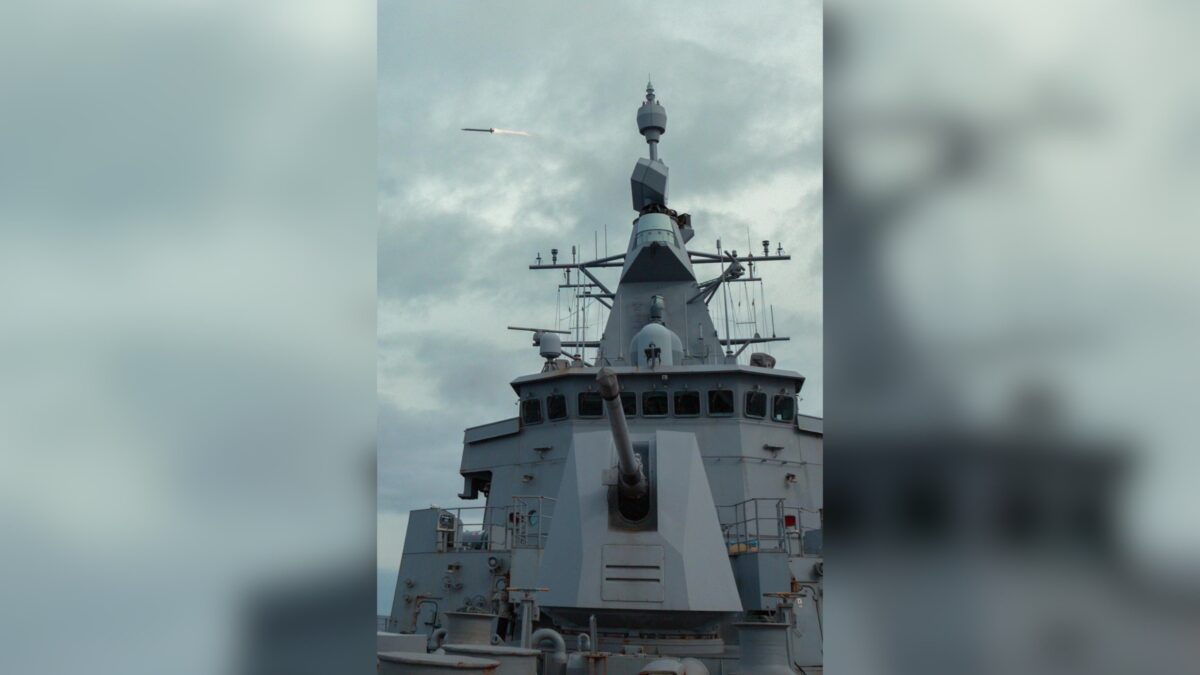Lockheed Martin Canada extends congratulations to the Royal New Zealand Navy for the successful Initial Test Firing (ITF) aboard HMNZS Te Mana post-modernization upgrades in Canada. Serving as the primary systems integrator, Lockheed Martin Canada facilitated the smooth integration of upgraded systems on two New Zealand Anzac-class Frigates.
“The successful firing of a SeaCeptor missile from HMNZS Te Mana is the culmination of Operational Testing and Evaluation of the Frigate Systems Upgrade project for the two New Zealand Anzac frigates,” said Jason Locke, Integrated Project Team Lead, New Zealand Ministry of Defence. “The integration of multiple mission systems, sensors, and weapons systems with the Lockheed Martin Canada CMS 330 has been successfully proven over the past twelve months of operations and testing. That such a complex project has achieved this level of success is a tribute to the professionalism and technical expertise of the personnel involved.”
Equipping HMNZS Te Mana and HMNZS Te Kaha with Lockheed Martin Canada’s CMS 330 Combat Management System (CMS 330), alongside a new suite of sensors and weapons, enhances the ships’ capabilities and modern naval threat protection. CMS 330 serves as a backbone for Canadian Halifax Class frigates and Harry DeWolf Class Arctic and Offshore Patrol Ships. It is also set to be the central system for upcoming Canadian ship classes, including the Protecteur Class Joint Support Ships, the Canadian Surface Combatants, and the Canadian Coast Guard variant of the Arctic and Offshore Patrol Ships.
“Lockheed Martin Canada has a proud history of producing, integrating and delivering Combat Management Systems for sea-based mission platforms,” said Glenn Copeland, General Manager, Lockheed Martin Canada Rotary and Mission Systems. “Our team optimized the fully Canadian solution with New Zealand’s ship design, ensuring the Royal New Zealand Navy has the capability to execute missions that meet their strategic naval objectives. CMS 330 was developed in Canada, for the Royal Canadian Navy and is now a globally sought after product. It has created and sustained economic opportunities in communities across the country, where a number of jobs are supported in Ottawa, Montreal, Halifax and Victoria through the software and hardware design, engineering, production, and testing of the advanced technology.”
Expanding its usage, CMS 330 has been integrated into three Armada de Chile frigates, fostering partnership and naval interoperability between the Royal New Zealand Navy, Armada de Chile, and the Royal Canadian Navy.
Lockheed Martin Canada remains committed to sustaining this new capability, collaborating with Canadian and New Zealand partners while contributing to local job opportunities and economic growth.
“Our continued partnership with the Royal New Zealand Navy in delivering this modernized capability is something we are very proud of”, Copeland continued. “Supporting seven classes of ships across three different navies, the Canadian pedigree and demonstrated interoperability between allied countries will propel further growth for our team and extended Canadian supply chain.”
In summary, Lockheed Martin Canada’s role in upgrading naval systems signifies a significant step forward in enhancing maritime capabilities for the Royal New Zealand Navy and beyond.

